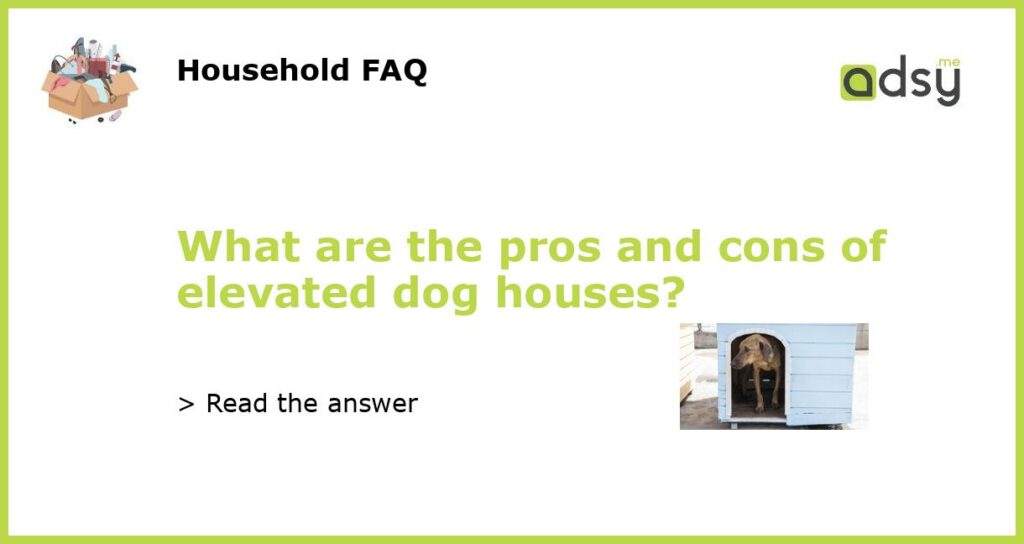Pros and Cons of Elevated Dog Houses
As a responsible pet owner, providing your dog with adequate shelter is one of your top priorities. Among the options available in the market, elevated dog houses have gained popularity for several reasons. Before you decide on purchasing one for your furry friend, here are the pros and cons that you need to know:
Pros:
1) Protection from the elements: Elevated dog houses provide superior protection against harsh weather conditions such as heavy rain, snow, and strong winds. By keeping your dog off the ground, they remain dry and warm even when it’s pouring outside.
2) Increased airflow: The height of the dog house allows for better ventilation, resulting in better air circulation. This keeps your dog cool during hot summers and prevents the buildup of moisture, which can lead to mold and mildew formation.
3) Fewer pests: Elevated dog houses are less susceptible to pest infestations such as fleas, ticks, and other insects. By staying above ground, your dog is less exposed to the creepy crawlies that may cause them harm.
Cons:
1) Accessibility: Larger dogs or those that are older may have difficulty when entering and exiting the elevated dog house due to the height. This may cause inconvenience and may even result in injury if they try to jump off the platform.
2) Stability: Elevated dog houses may be less stable compared to a traditional dog house placed flat on the ground. Depending on the material used and the setup, it may be prone to wobbling and even tipping over in extreme weather conditions.
3) Maintenance: Cleaning an elevated dog house may be more challenging compared to a regular dog house. As it is elevated, cleaning its interiors may require more effort and time. Also, the space underneath the platform may collect debris and dust, which can be an additional task.






